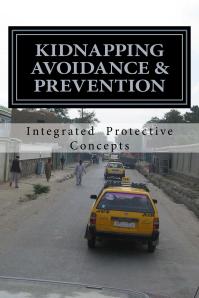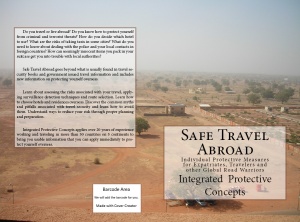Thinking about Crime Scene 2
October 25, 2014 4 Comments
In the past we have looked at the question of when and whether you should resist a crime or not. Most authorities on personal security and most law enforcement sources will advise you to comply with a criminal in the case of an obviously economically-motivated crime. If a mugger wants your wallet or your cell phone, just give it to him. If a thief grabs your bag don’t chase him. Things can be replaced, people’s lives can’t. Most people agree, you should not put your life at risk to defend material possessions. Many, maybe most of those people would agree that in the face of a physical assault you need to escape or fight back. What about the gray area in between? What do you do when your assailants want to force you into a vehicle or otherwise move you from the place where contact first occurred (Crime Scene 1).
This phenomenon is called Crime Scene 2. I first learned about this concept from the book Strong on Defense written by Sandford Strong in the 1990s. Strong, a retired San Diego police officer argues you should never let yourself be taken to Crime Scene 2. Strong makes this argument for some very good reasons I think. In his perspective Crime Scene 2 is always worse. The only reason why the criminal would seek to move you to Crime Scene 2 is to get more privacy, better isolate you and have better control. What is likely to follow will be very bad – probably torture, sexual assault and often murder. Under these conditions you would likely do well to stand your ground at Crime Scene 1 and fight or try to escape even at risk of injury or death to yourself. In the US, Canada and a number of other countries this is very often a reasonable and sound strategy. In other places in the world, however it can be less clear.
Kidnap for ransom is a rare crime in the US and when it does occur there is a very high apprehension and prosecution rate. Express kidnapping, while perhaps more common than kidnap for ransom is still pretty rare. Therefore, many abductions in the US occur for other than financial gain and there is some real validity to Sanford Strong’s hypothesis that Crime Scene 2 is always worse than Crime Scene 1. This is especially true for women and children who are more likely to be targeted for predatory, sexually motivated crimes.
Once you leave the US, Canada, Western Europe, Australia and some of the more developed nations of the Pacific Rim this becomes less clear. In many places around the world, kidnap for ransom and express kidnappings are common, even rampant. In these environments people are abducted for financial reasons and frequently come through the experience alive if traumatized. In the case of express kidnapping in particular, the crime can be over relatively quickly. A quick trip to the ATM and a withdrawal of the daily maximum is often followed by the release of the victim. In some cases the victim may be held past midnight to make a withdrawal on the next day. In other situations such as kidnap for ransom, victims may be held for days, weeks and sometimes even years but are frequently eventually released. Yes – sometimes it’s not a successful outcome. As we have seen from the recent hostage executions by ISIS and the Daniel Pearl case in Pakistan that kidnappings can also end badly with the victim being executed, sometimes very brutally and publicly.
We discussed the question of to resist or not to resist as well as the issue of Crime Scene 2 here: https://protectiveconcepts.wordpress.com/2012/08/20/to-resist-or-not-to-resist-that-is-the-question/. It’s a difficult question that is very situationally dependent. It should depend a lot on where you are and adversary tactics in that area. It’s going to also depend on your capabilities and your mindset. There is no pat answer that will fit every person and every scenario.







